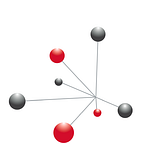The Why, What And How Of Composable Data And Analytics
Analytical teams are constantly coming up with ways to make sense of the millions of bits of information that flow into an organization, sometimes on an hourly basis. Before the Covid-19 pandemic, data analytics took a more rigid approach with a monolithic data architecture, which can be described as a “generalist, all-in-one” solution. That method, however, lacked the
expertise to manage all elements of the data infrastructure effectively.
As a counter to that rigid system, a new, trending way today is the deployment of composable data analytics. This is a process by which organizations combine and consume analytics capabilities from various data sources across the enterprise for more effective, intelligent, and above all, faster decision-making.
As the Gartner team pointed out in the Gartner Analytics Summit Americas in 2021, data and analytics leaders can generate new business value by using such a modular approach.
The aim of composable data and analytics is to use various data, analytics, and artificial intelligence (AI) solutions to link data insights with business actions faster. Through the introduction of low-code and no-code capabilities, organizations can develop tailored analytics experiences with analytics capabilities that are modular rather than monolithic applications.
The Express Analytics’ customer data platform Oyster has a similar modular approach. It is a single-point platform that can integrate all business data across advertising, marketing, sales, commerce, and service.
So by now, it would have become clear to you that composable data analytics is not a single tool but a combination of a set of tools that provide the solution to a problem. It can provide greater agility than traditional approaches, and feature reusable, “swappable” modules that can be deployed anywhere, including containers. In fact, composable data analytics help enable
organizations re-imagine how they acquire, clean, store, and analyze the type of terabytes of data in which they traditionally reside. All of which helps reduce their costs and improve performance in support of new business needs.
What Is Composable Analytics?
Composable analytics allows you to assemble and re-assemble data processing pipelines, as well as data products, in a modular way. That way, you can configure pipelines of a certain complexity and feature set, and then compose them into larger workflows. For example, when you want to process a data set, you can start with a pre-configured analysis, and then use composition features to build more advanced pipelines. You could, for example, use composition to build an analysis pipeline out of several pre-configured analytics.
The development of applications has become modular. Large monolithic applications should be broken up into smaller, individual services and accessed through Web services and APIs. But what about data analytics and its huge data sets? Some people say the time is ripe in the post-Covid world for comprehensible analytics as well.
To read the rest of the article, click here.
